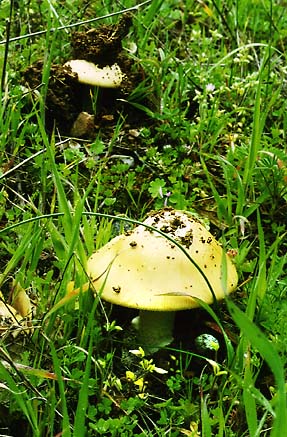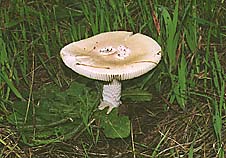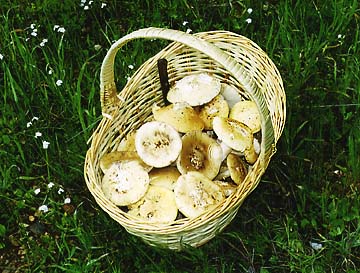 Amanita Velosa
Amanita Velosa Amanita Velosa
Amanita VelosaOne of the few edible Amanitas, this Springtime Amanita is absolutely delicious. It's wise to approach this species with great caution however, considering the lethal associations of its genus. Several features help to distinguish A. velosa from other Amanitas: an unbroken central universal veil remnant (the patch on it's cap), a striate margin, general lack of an anulus, and a mild fishy odor. The fishy odor is perhaps the most reliable feature of the three, but I am always very careful to study all features of every specimen before putting them in my basket. Some of the poisonous Amanitas can develop a striate cap margin, and the patch on the cap of A. velosa can often break up into warts to resemble A. pantera - a hallucinogenic species of medium toxicity. As always you should consult a real identification guide (or walk with an expert unless you're an expert yourself!) before collecting these. Don't rely on my casual descriptions.
Now, with words of caution out of the way, I must say that this is one of the most subtle and delicate mushrooms that I have ever tasted. The fishy smell dissipates as you cook it (unlike Russula xerampolina, which maintains its seafood characteristics.) Once sautéed, it acquires a smooth nutty flavor that evades comparison. Best appreciated on its own or in combination with mild flavors, anything strong will simply overpower it.
Many of the above comments also apply to Amanita Calyptrata, the Autumn counterpart to A. velosa, and equally delicious.
You can find A. velosa in the Springtime along the California
coast, growing in meadow clearings on the fringes of live oak groves. It
seems to sprout up around the same time that the Agaricus augustus
appear - a bountiful time indeed!
Here's a few recipes that use Amanita velosa:
